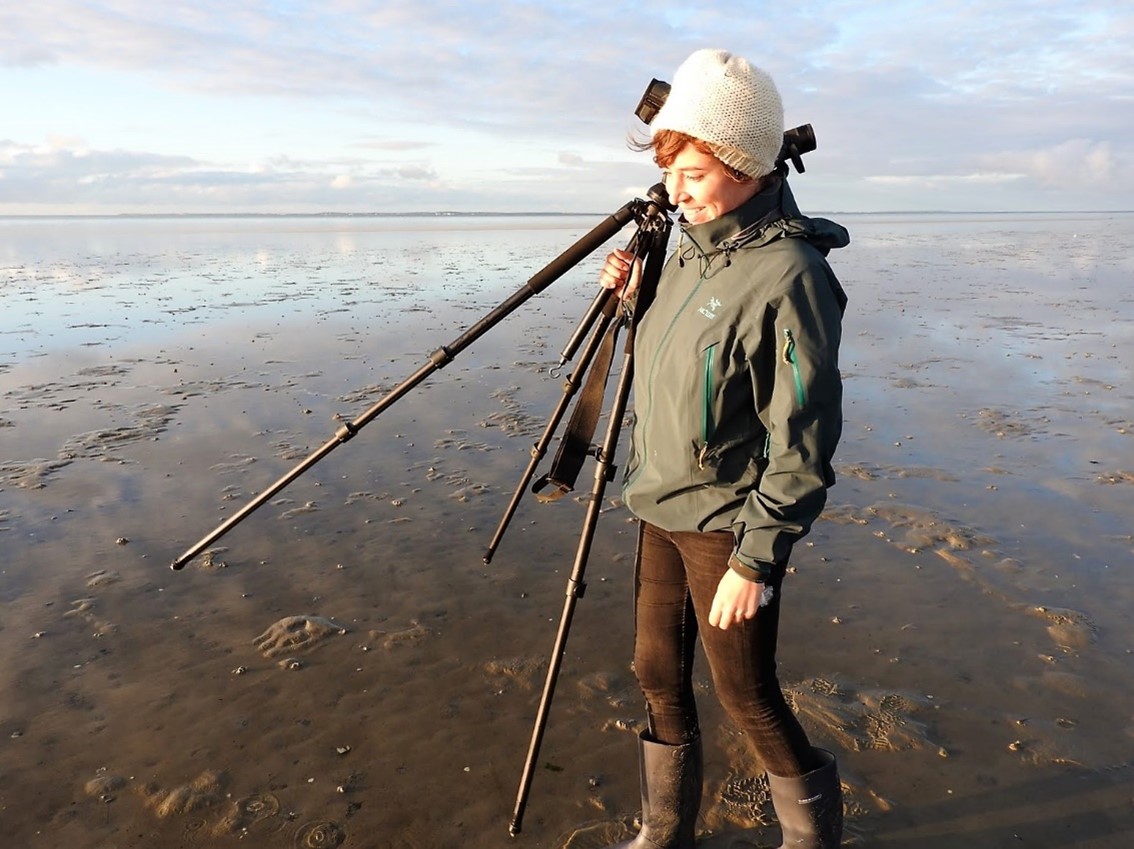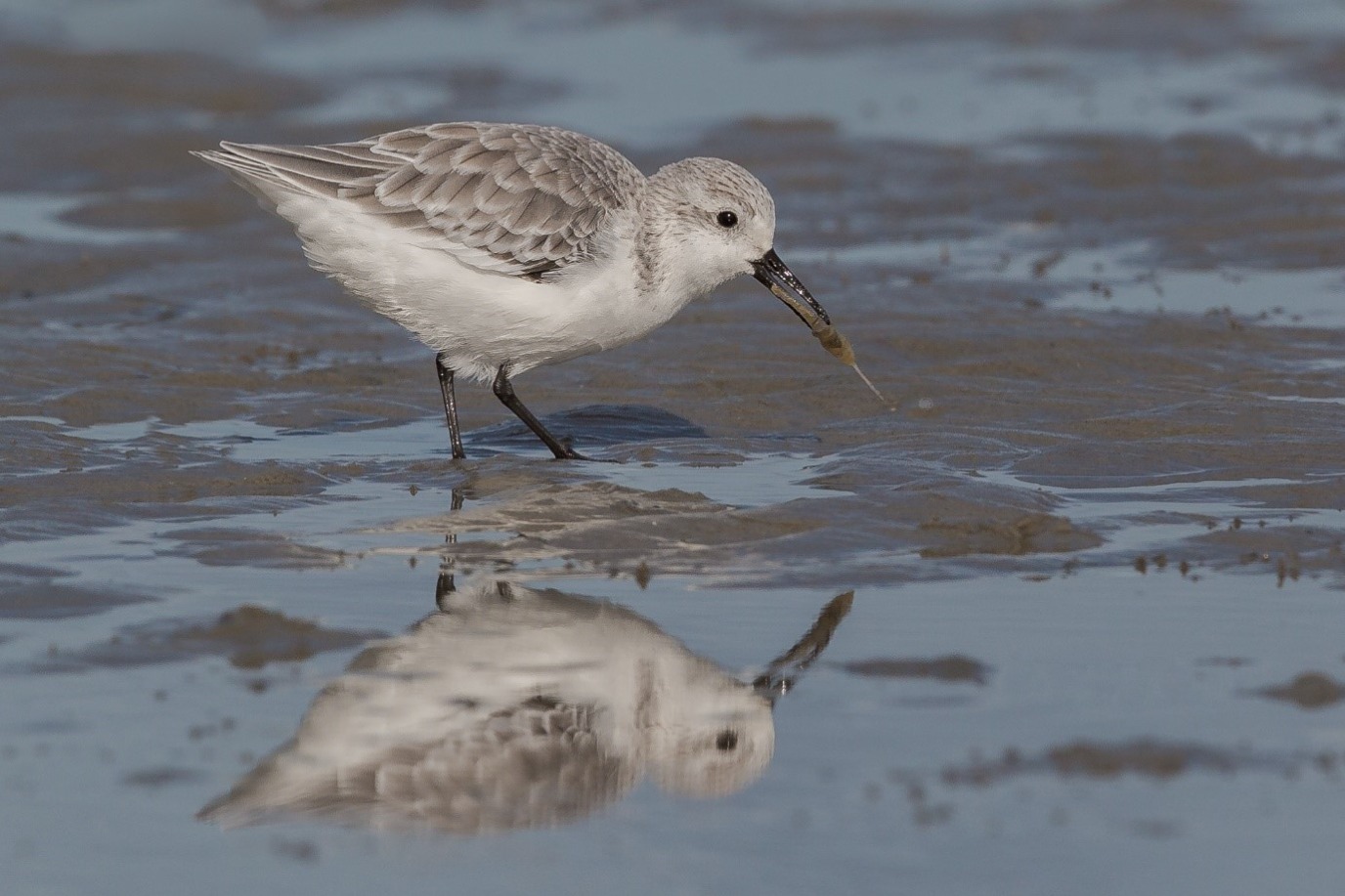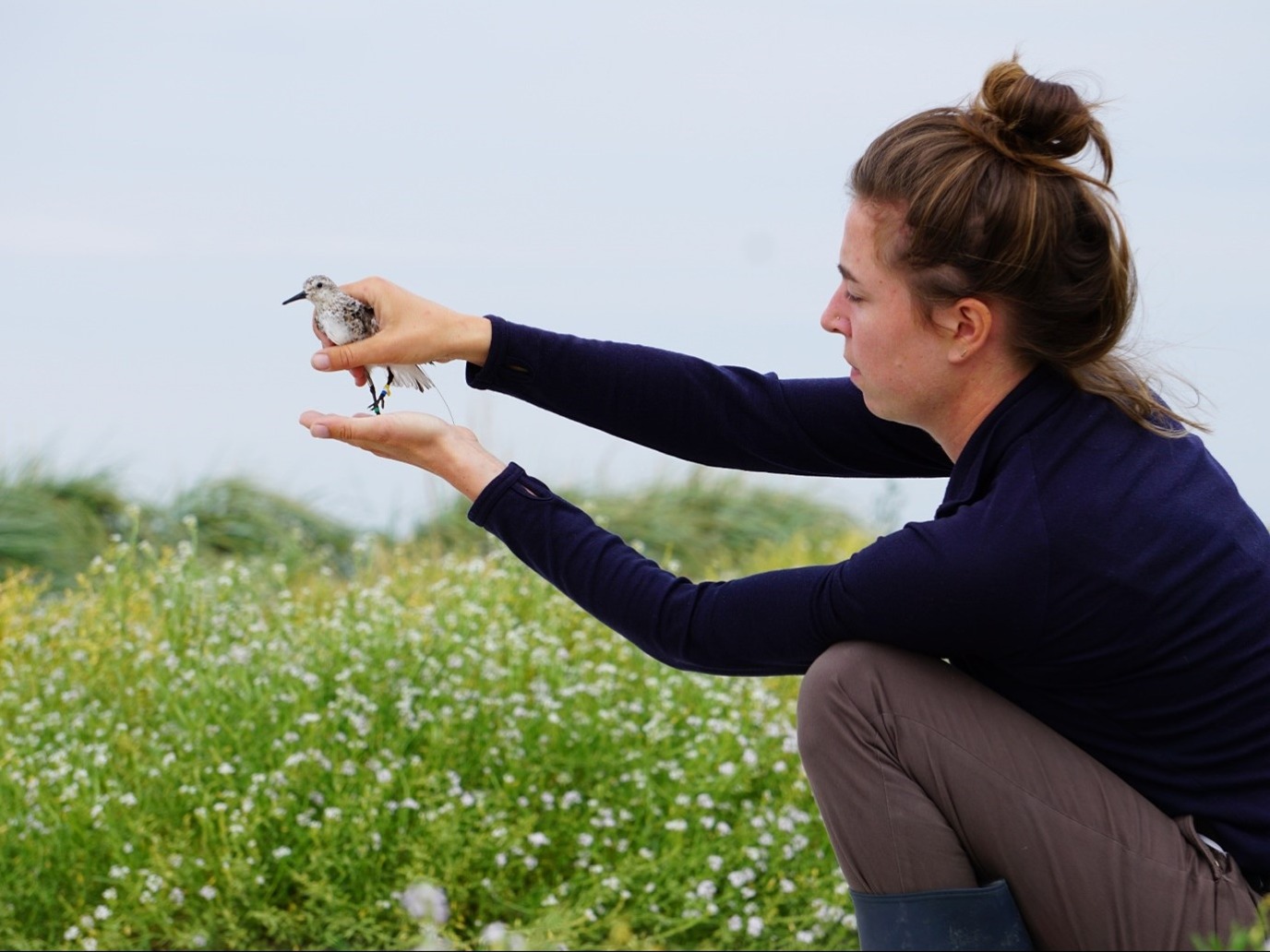Succesful sanderlings go for shrimp

Against the trends for many shorebirds, sanderlings have been doing relatively well in the Wadden Sea for the past years. The key to that success lies in the timing of these little birds' main food: shrimp on the mudflats. That is one of the inferences of the research by Emma Penning, who will defend her PhD thesis on 28 November in Groningen. ‘Due to the changing climate, shrimps migrate to the shallow parts of the Wadden Sea a bit earlier and also in higher numbers. Migrating sanderlings benefit from that,’ Penning observed.
More or less by chance, more than a decade ago researchers on the uninhabited Wadden islet Griend discovered that sanderlings from all corners of the world congregate there. ‘The coloured rings on the birds' legs, which can be read at a distance with the telescope, showed that sanderlings from Africa, Southern Europe, England, Iceland and Eastern Europe were all there. They do so before leaving for breeding grounds in Greenland, or after returning from them. But the reasons why they prefer the Wadden Sea, we didn't know back then’, explains Penning, who is affiliated with the Royal Netherlands Institute for Sea Research NIOZ and the University of Groningen.
(text continues below the picture)

Fecal DNA
For her PhD research, Penning literally spent thousands of hours looking through the telescope at foraging sanderlings. ‘You can see a lot that way, but not everything. The birds peck small prey out of the sand at lightning speed, so you can't always identify their prey by name. We also often saw very clearly that they were running after jumping shrimp. Only when we looked at the DNA in the birds' droppings, did we see how important shrimp are. In fall, shrimp make up as much as two-thirds of the sanderlings' diet.’
Sanderlings can eat all sorts of prey, from worms and small snails, to washed-up shellfish and small crabs. ‘But when they get the chance, they will go for shrimp,’ Penning observed. ‘Even when the number of shrimps slowly declines at the end of the summer, we see that they still make up the majority of the diet. At the end of September, when the shrimp have moved to the deeper parts of the Wadden Sea and North Sea, the birds switch to other sources of food. That is also the moment when the birds start to show up in higher numbers on the beaches of the North Sea.’
(text continues below the picture)

Vast mudflats
The vast mudflats around the islet Griend are especially good habitat for shrimps, according to the counts by Penning and colleagues. ‘The entire population of sanderlings on the east coast of the Atlantic is estimated at 250 to 300 thousand birds. During the peak in early spring, there may be as many as 20 thousand birds around Griend at one time. Throughout the year, probably a quarter of the population visits the Wadden Sea at some time. For the exact numbers, we need to look more closely at the repeated observations of individually ringed birds.’
Penning assumes that Griend is suitable for sanderlings because of its tranquility and the vast mudflats around the island. ‘Moreover, due to the warming climate, we see that the shrimps are now showing up here a week or two earlier in spring. Coincidentally, this makes it a close fit now with the travel scheme of the birds. We propose that this recent ‘match’ why this is the only population of sanderlings in the entire world that is on the rise. Sanderlings along the coasts of the Americas, Asia or Australia are not doing nearly as well.’
(text continues below the picture)

Seasonal rhythm
The fact that sanderlings benefit from the changing climate would thus be a matter of coincidence. ‘We can't say that the birds have truly adapted to this change. The changing seasonal rhythm of shrimps just fits well with the birds' schedule. My research therefore shows that one should look at an entire food chain to understand changes in bird numbers. If temperatures will rise in the coming decades, it remains to be seen how sanderlings and the rest of nature in the Wadden Sea will respond.’
| Last modified: | 27 June 2024 3.48 p.m. |
More news
-
21 November 2024
Dutch Research Agenda funding for research to improve climate policy
Michele Cucuzzella and Ming Cao are partners in the research programme ‘Behavioural Insights for Climate Policy’
-
13 November 2024
Can we live on our planet without destroying it?
How much land, water, and other resources does our lifestyle require? And how can we adapt this lifestyle to stay within the limits of what the Earth can give?
-
13 November 2024
Emergentie-onderzoek in de kosmologie ontvangt NWA-ORC-subsidie
Emergentie in de kosmologie - Het doel van het onderzoek is oa te begrijpen hoe ruimte, tijd, zwaartekracht en het universum uit bijna niets lijken te ontstaan. Meer informatie hierover in het nieuwsbericht.

